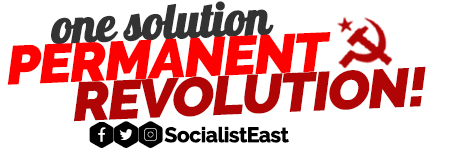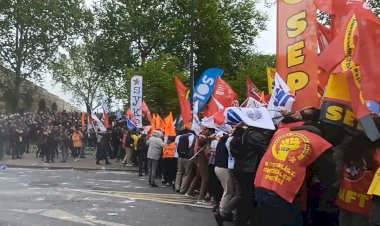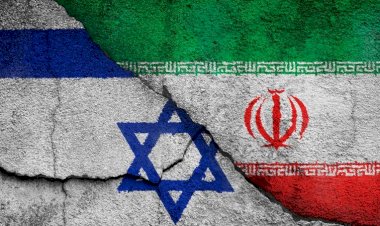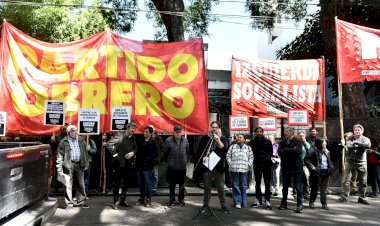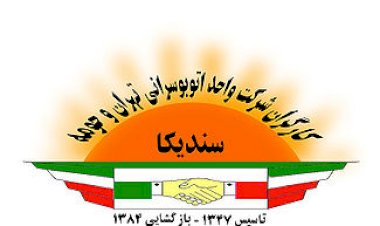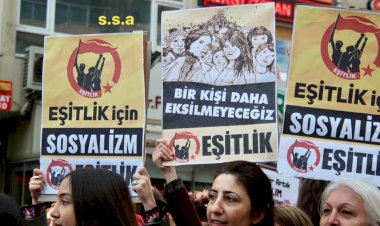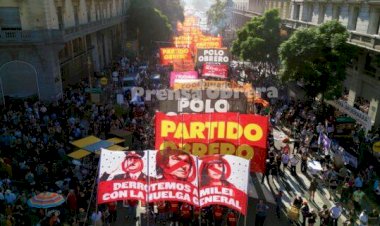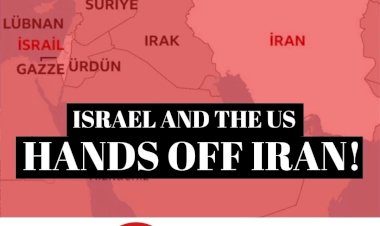Are Trade Wars Ending the Neoliberal Globalization Fairytale?
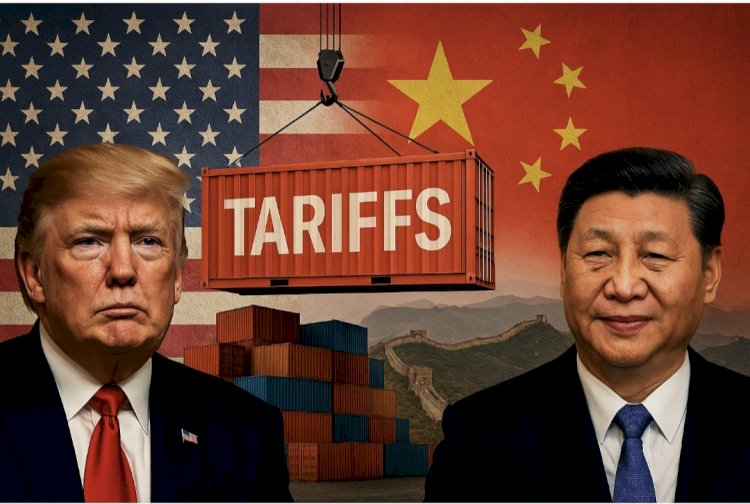
by Emre Güntekin
There is a growing number of questions in the U.S. media about how much uglier things can get. Especially following the trade wars launched by Trump as a major component of his ‘America First’ concept…
U.S. Ruling Classes Divided Over Trade Wars
The consequences of the tariff hikes are also exposing cracks within the Trump administration. An example of this could be seen in the clash this week between Elon Musk who is one of Trump’s closest figures since the beginning of his term and Peter Navarro, Trump’s trade advisor and a fervent supporter of the trade wars, especially against China. Navarro claimed that Tesla, whose production largely takes place in China, is more of a car assembler than a manufacturer, and that the company could find itself at odds with Trump’s tariff policies. He recommended that components such as batteries, electronics, and tires be manufactured in the U.S. Musk, in a style befitting him, referred to Navarro as a "moron" on social media, saying he was "dumber than a bag of bricks.”
Setting aside the sensational aspects of this debate, it’s clear that there is a sense of unease among the American ruling classes. Indeed, shortly afterward, the implementation of the tariff increases for countries other than China was postponed; the tariff increases for cell phones, computers, and a number of electronic materials imported mainly from China were withdrawn. It’s fair to say that companies like Apple, Microsoft, and Nvidia which were thrown into deep uncertainty by the massive hikes on imports from China breathed a sigh of relief.
What do the Trade Wars Reveal?
The rise of trade wars, or in other words, the resurgence of protectionist barriers, has historically coincided with periods of major historical upheaval under the capitalist system. Since the collapse of the USSR, the process of globalization and the reorganization of international labor division have created increasingly visible competition among today’s imperialist powers.
This process of globalization involved the rapid integration of the former USSR’s territory into neoliberal capitalism and particularly the positioning of China as a global manufacturing hub. China’s role in this regard played a significant part in softening the effects of the 2008 crisis. However, after Xi Jinping came to power in 2013, China began to move beyond being merely a production base. With transnational projects like the Belt and Road Initiative and new trade partnerships, alongside its technological breakthroughs in production, China is now emerging as a new force against American hegemony.
At this point, two major historical events further exposed the malfunctions within neoliberal capitalism.
The first was the COVID-19 pandemic. It became evident that such an extensive level of global economic and trade integration would leave national economies defenseless in the face of shocks that break supply chains. For example, remember how access to basic sanitary supplies like masks and ventilators became extremely difficult during the pandemic. It turned out that capitalism is prone to crisis not only in the face of colossal disruptions like Covid-19, but even smaller-scale incidents such as when the Ever Given container ship blocked the Suez Canal in 2021.
The second breaking point was Russia’s invasion of Ukraine. Russia's role in supplying natural gas, which is a core requirement for capitalist production, especially in Europe, became evident with the war. As gas supplies were cut off and sanctions were imposed on Russia, inflation soared across Europe, and the living standards of working-class people deteriorated significantly. The political and social consequences of this are still fresh in our minds.
Crises of this kind also fuel skepticism about the narrative that neoliberal globalization is the only possible alternative. Putting aside the few growth stories neoliberalism produced in the 1990s, there are plenty of reasons to consider it a total failure. As inequality deepens globally, exploitative conditions reminiscent of capitalism’s primitive accumulation phase are becoming widespread in many parts of the world. Secure and dignified work is becoming a privilege reserved for a very narrow segment of society. The commodification of every aspect of life renders the majority of humanity unable to access even their most basic needs. On top of that, neoliberalism has failed to offer any remedy for capitalism’s deepening crisis, and we haven’t even begun to talk about how its signature promise of a world without war has been repeatedly proven false, from the Balkans to the Middle East.
Therefore, we must see trade wars as the outcome of a situation in which ruling classes, faced with a capitalist crisis, can do nothing but make imperialist competition even more explicit. The real question is: Who will carry the burden created by these trade wars?
Trade Wars Threaten the Working Class
If the recent step-backs from the trade wars initiated by Trump turn out to be short-term, it's inevitable that the consequences of these two historic events will become even more pronounced on an international scale.
Mass unemployment (especially in countries whose trade is heavily dependent on the U.S.), and rising inflation that limit access to basic consumer goods for the poor and working class; these are the most immediate consequences. Indeed, the company Stellantis, after Trump raised customs tariffs, temporarily laid off 900 workers in its five factories in the U.S. Moreover, a survey conducted by CNBC among CEOs revealed that 37% plan to implement layoffs in 2025, and unemployment is projected to rise from 4.2% to 4.7% in the same year. That means around half a million people may lose their jobs.
Countries with strong trade ties to the U.S. are already drawing up plans to mitigate the potential damage in favor of capital. South Korea, which sends 49% of its automobile exports to the U.S., has rolled out a $10 billion stimulus package, including tax cuts, to preempt a crisis. Similar measures will likely surface in many places as the crisis deepens. We know all too well how, during the 2008 crisis, ruling classes mobilized trillions of dollars to rescue companies on the brink of collapse. The bill, of course, was later passed on to the working class. While tax breaks are discussed to protect capitalists, rising prices in consumer goods damage working people directly.
To ideologically disarm the working classes in the face of this process, the ruling elites resort to intensifying heightened nationalism and reactionary tendencies, such as stoking anti-immigrant sentiment, leaning on paranoid outbursts like Trump’s ‘They’re stealing our jobs. The truly tragic part is that figures like Shawn Fein, who is the president of the United Auto Workers (UAW), being the most influential union in the U.S. automotive sector,r are acting as Trojan horses within the working class, embracing and polishing Trump’s rhetoric about bringing manufacturing back to the U.S. Even the shameless revelation that a few speculators are rapidly increasing their wealth through stock market manipulation triggered by Trump’s stop-start tariff moves doesn’t provoke the slightest sense of shame in the Oval Office. It should not be forgotten that the stance of such union leaders and reformist left tendencies in the face of the trade wars offers a clue as to where they might stand in a future imperialist conflict.
The Ruling Class has Started the War—The Working Class Can End It!
Imperialist rivalries, wars, and crises are some of the most ordinary outcomes of capitalism to date. As long as capitalism survives, it will continue to deliver new and terrible surprises to humanity. This reality can only be overcome by the intervention of the working class in history.
All over the world, alongside the far-right and authoritarian waves, we’re also seeing mass movements rising as a counter-force. Last week in the U.S., millions of people took to the streets in over 1200 locations across all 50 states to protest the Trump-Musk duo’s public sector layoffs and social cuts. The student mobilizations, especially against the ongoing genocide in Palestine show the vitality of the youth movement.
The protests in Turkey that began after March 19, the social explosion that toppled the government in Serbia, and many more examples show that a social alternative is also fermenting in response to the ruling class’s aggressive tendencies.
The question is whether a revolutionary alternative can emerge to confront this deep crisis that capitalism has plunged humanity into. History is calling revolutionary Marxists to the stage to fulfill this task.
